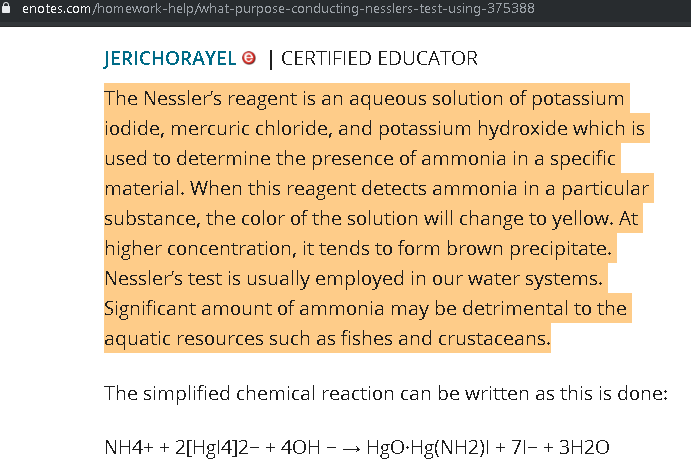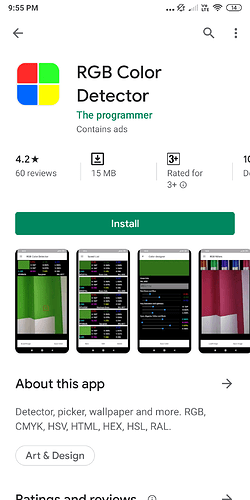This is just to indicate whether ammonia is present or not in the bottle cultures …how will you determine the levels of ammonia ?
For that we can do titration as told by @jaikishan
Okay good…so when are you planning to do it ? Tell us your plan of action …let’s find out finally that at what concentrations do ammonia is harmful for moina ![]()
![]()
As I said it’s just not about Ammonia. We need to figure out a way for estimation of Bacteria in the water and also we need to figure out a way to measure oxygen both of these measurements will assure us whether they die due to Ammonia or anything else.
Actually you do - with some tinkering.
https://pubs.acs.org/doi/pdf/10.1021/ed300567p
There are several such resources online that describe using a cell phone as a colorimeter.
Due to wide variation in image acquisition and post processing in cell phones, our results are likely to vary wildly between different camera models. There are however mitigation methods too. AFAIR I posted an article on the image problem in cell phones in the DIY microscope thread.
After we try out the above, we could use a standard camera that provides raw output coupled with a tungsten lamp to do an even better job.
Of particular interest is the multi disciplinary nature of the problem.
https://pdfs.semanticscholar.org/8456/87e37d1af5dd4099dbcc6ce04955d7739b78.pdf
Additionally estimating the uptake and replenishment of NPK in aeroponics and hydroponics would be very good. The above method could be used to have a wholly automated system.
I am trying to wrap my mind around it but could you simplify a bit the principle and the process by which we use smartphones as colorimeter. I saw the apps but I didn’t understood this section of the reply.
I also didn’t got what you mean by NPK.
Camera, lens, optical filters and image processing software vary widely between different phone models. Consequently an object photographed on one camera will look different on another.
The mitigation methods involve using a standard image-lightsources and generating a difference component, then using software to incorporate the difference so that one has the original image independent of the phone camera.
Using a regular camera that can give a raw image removes the need for such a complex calibration.
Here is a link about the method f calibration.
Colorimeter-cal-oe-27-14-19075.pdf (2.3 MB)
NPK
Nitrates, Phosphates, Potassium - nutrients in plant fertilizer.
Take a light source. Take a sample and add a suitable staining reagent. Shine the light source through the sample. Measure the light intensity passing through the sample using a sensor - your camera in this case. The camera has an app that takes the individual R,G,B values of the image and gives a quantitative measurement of light received and consequently the light absorbance characteristics of the sample. The rate of change of color provides quantitative information.
The first link page 32 onwards provides good explanation.
CAVEAT: My chemical and biology fun ended in school several decades ago.
Details for spectrometer
Several companies make light sensors - TI, Analog, Maxim, Vishay, Kingston etc . Datasheets of possible sensors for use in colorimeter and spectrometer.
Please give everyone a short summary on this video. @pratittodkar
The Theory of the video
Let’s try it out and identify advantages and disadvantages over a more conventional approach.
I searched a little bit on the internet the only problem with this method is that the Beer’s Law fails for higher concentrations
Can everyone test this method on there own or is there a need for any further explanation?
what do you mean by Beers Lamberts law? What is it exactly?
How does it fail?
can it be coped up?
It will be great if mobile can be made into a colorimeter @jtd @pratittodkar
@pratittodkar pls explain what is the purpose of this app?
How will it be useful?


